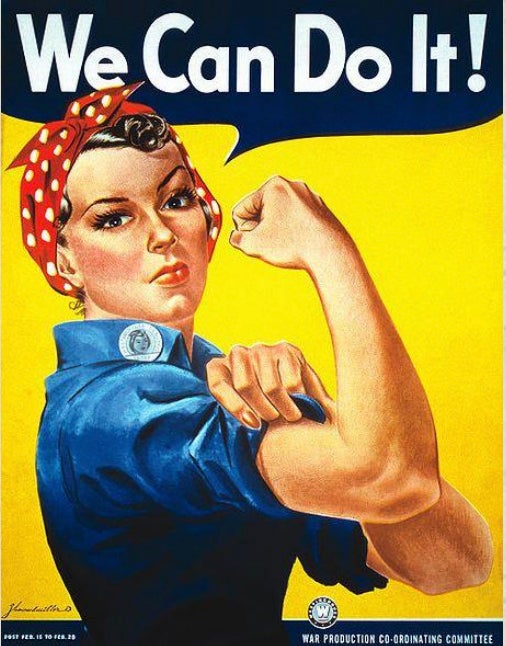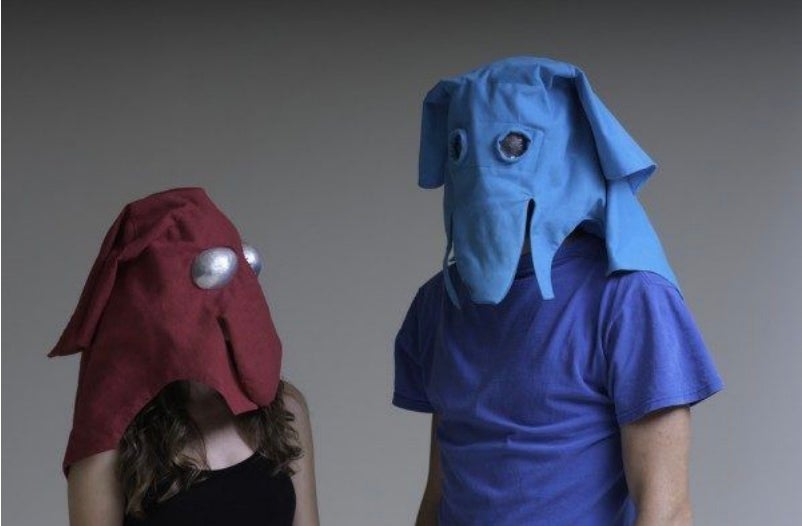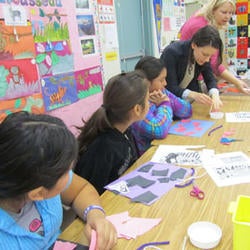Gluck Creative Classroom - History of Art
Art Appreciation
|
Making Art of Ourselves: Self-Portraits, Self-Expression, & Identity We know that the arts are crucial means of self-expression for students of all ages and stages of cognitive development. Despite this, we see a continuing trend of disengagement in the visual arts among students. Through this course module, students will learn about identity, self-expression, and one of its key manifestations: self-portraiture. By familiarizing themselves with formal analysis, students will engage with famous artworks through the eyes of an art historian, learning how self portraits have been successfully used to express one's' identity. This all culminates in a self-portrait drawing tutorial, where students will visually depict their own identities, taking on the role of the artist. Making-Art-of-Ourselves-Intro Downloads: |
|
FLY YOUR FLAG HIGH Learn about the uses and meaning behind Flags and make a personal flag to express your individual identity |
|
Learn how to read images as visual documents |
|
In this project students will learn the difference between a photograph and a painting. Student will learn to describe the contents of images in order to identify their meanings and brainstorm ideas for the production of their own images (family portrait). |
|
Learn how art historians describe artworks and create your own ekphrastic college |
World Culture
Andean Culture |
|
About Incas and ancient Andean methods of tying knots to keep records |
Aztec Culture |
|
BECOMING VISUALLY LITERATE: READING AND WRITING AN AZTEC CODEC This workshop will introduce the Aztec culture and focus on Aztec pictorial writing while building visual literacy and visual communication skills. Students will be taught storytelling elements used in these codices including how to recognize figure identities and names. In order to tell a story in their own codex, students will create a figure with a unique Aztec name and sign, draw upon Aztec pictogram storytelling basics, and creatively invent new visual cues.
Workbook: Becoming Visually Literate: Reading and Writing as Aztec Codex.pdf |
|
Follow this legend to learn to write your birthdate using Aztec Codex |
Balinese Culture |
|
Create your own character based on traditional Balinese shadow puppetry storytelling |
|
Templates for creating 2 Balinese Shadow Puppets |
Chinese Culture |
|
Poster about narrative art featuring Chinese hand scrolls |
|
Information on Chinese Calligraphy and instructions on writing a few words |
Egyptian Culture |
|
Introduction to hieroglyphics with a writing/drawing activity |
Ancient Greek Culture |
|
How is culture studied and did you know that Greek sculptures had colors? Repair and color ancient Greek sculptures The Colors of Ancient Greece: Color and repair ancient sculptures |
Indigenous American Culture |
|
7 facts about Totem Poles with images of various totems and totem design |
Islamic Culture |
|
Tessellations: Geometry and Art in Islamic Tile Work Tile work of the Islamic world is, perhaps, the most complex and visually-stunning application of geometric patterning ever undertaken. On the walls of built structures across the vast Islamic Empire—which lasted for nearly 1,300 years, from the early 7th century into the early 20th century—artisans created beautifully- intricate tile mosaics, using mathematical principles not even understood in Western science until the late 20th century! Over the course of this program we engage with this fabulous art by exploring the close connections between art and mathematics in Islamic tessellated tile work. Students learn the basic features and function of geometric tile work in the Islamic world and how to identify tessellating patterns in such tile work (as well as in their everyday lives), make their own tessellated designs, and reflect on the geometric principles behind this repeated patterning. Downloads Syllabus - PDF Geometry and Art in Islamic Tile Work - PDF, PowerPoint Translation Tessellations - PDF, PowerPoint Activity Worksheet: Making Your Own Simple Translation Tessellation - PDF Glide Reflection Tessellation - PDF, PowerPoint Activity Worksheet: Glide Reflection tessellation - PDF Further Resources - PDF |
Korean Culture |
|
Poster with examples of Korean genre painting |
|
Poster with examples of Korean Chochungdo nature paintings |
Western Art |
|
The Colors of Water - Learn about the California Impressionists' style Cave Paintings - PowerPoint introduction to Cave Paintings The Art of Still Life - Introduction to the still life genre in Western art Picasso's Portraits - Learn about Picasso's portraits and influences Pointilists Images - A collection of pointilists paintings Murals: Our Talking Walls - Learn what murals can tell us about people and places. Explore those ideas in mural work of Diego Rivera and create your own mural design Wassily Kandinsky: Painting With Music - Learn about the paintings of Kandinsky and create works inspired by music |
North America |
|
The Harlem Renaissance: Forming Identities This program functions with a goal to cultivate learning, understanding, and empathy within students by exposing them to important Harlem Renaissance artists and other key figures. The objective is to help students learn about diverse cultures within America while further developing methods for them to express themselves through art. Through examples and eventually putting what was learned into practice, students have the opportunity to learn something new and potentially inspiring. Download: |
|
Harlem Renaissance Intro.mp4 |
Art Activities Based On Objects
|
Making New Meanings: The History of Collage Download: pdf version |
Making New Meanings: How to Make a Collage |
|
Making New Meanings: Crossword Puzzle Download: Crossword Puzzle.pdf |
Making New Meanings: Dada Poetry Download: Dada Poetry.pdf |
|
Making New Meanings: 3D Collage Download: 3-D Collage.pdf |
Making New Meanings: Photogram Download: Photogram.pdf |
Materiality, Transformation, Aggregation, AccumulationBy using this Digital DIY Curriculum students will practice tactile manipulation with a single material, transforming it into a three dimensional sculpture. Students will learn about the work of Tara Donovan and practice interpreting physical gestures within artistic work. Students will use paper to make their own sculptures and explore the potential ways in which a material can transform into another object. By the end of the lesson students will be able to identify and interpret physical gesture as well as identify other possible materials for sculpture. |
|
|
Tactile Maps video |
Tactile MapsLearn about artists whose work deals with touch and mapping their environment. Create drawings which map the objects and surfaces around the through touch. Downloads |
Genre
Propaganda as Art - Introduction and history of propaganda art and discussion prompts for creating your own |
|
Photo by Sterling Davis on Unsplash |
Modern Architecture - Mid-Century Modern architecture activity to design a 'cool house' inspired by the Case Study House program |
Sensorial Masks: When You Can Touch, Smell and Play With Art - About Masks and the work of Lygia Clark's Sensorial Masks |
|
Figurative/Architectural/Abstract Sculpture - Seeing and creating different sculpture types Seeing Between the Lines Learn the formal characteristics of Abstract Expressionism |
From The CMP Collection
|
From The CMP Collection - Sharing Photos - Read about photograph from the CMP collection: Sharing Photos From The CMP Collection-Trains - Read about Photographs from the CMP collection: Trains From The CMP Collection - Easter Parade - Read about 2 photographs from the CMP Collection: Easter Parade From The CMP Collection: Lola Montez - A Photo of Lola Montez from the California Museum of Photography collection and the story behind the photograph |
About the UCR Department of the History of Art
With its recently established PhD program, a well-respected MA program and a rich and varied array of undergraduate courses, the Department of the History of Art provides a congenial and stimulating context in which to explore the history of art in different cultures and periods. Through close collaboration with departments such as History, Comparative Literature, Ethnic Studies, English, Anthropology, Music and, of course, Art, our teaching and research are embedded in the wider fields of the arts and humanities and we see art history as an essentially interdisciplinary activity. All members of our distinguished faculty are internationally recognized and actively publishing – see our individual faculty profiles– and our teaching and supervision of students at all levels is informed by these research interests. Covering medieval to the contemporary periods, our research and teaching deals with images and artifacts from Europe, Asia and the Americas.
Why study art history? Throughout history, art and architecture have been among the most powerful means of social interaction and communication. Today, the visual dominates our world more than ever before. The discipline of Art History attempts to analyze how images and materials have been used in the past and are used in the present through a thorough understanding of their visual, contextual, and ideological bases. The History of Art is a unique discipline in that it allows students to approach and to access a great variety of subjects through the study of material culture. At both the undergraduate and graduate levels, students examine works of art in relation to the historical, political, cultural, social, philosophical and theological circumstances surrounding their creation.










